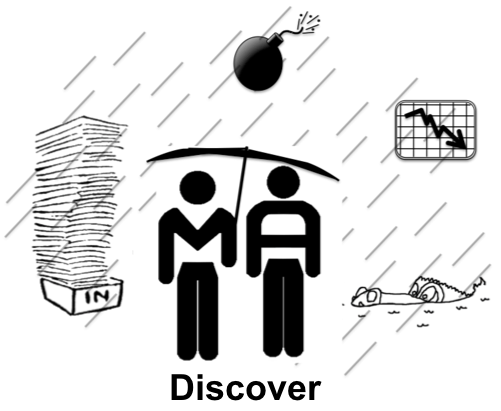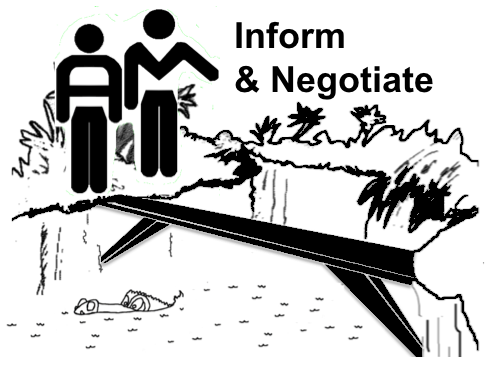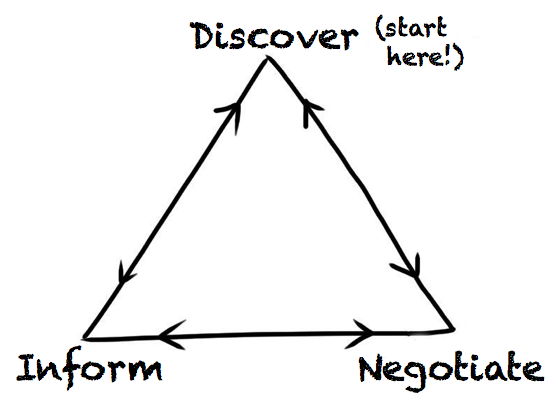Do step of the Encounter Process

I now enter into the core of the meeting.
In the context of CAE work, the most common reason for meeting a client is in order to help them in some way. However, before offering any solutions to my client, I have to find out what their problems are. To do this, I use Discovery – Learning Discovery to find out simple facts and Guiding Discovery to dig deeper and understand, for example, the reasons behind my client’s stated objectives. As will be discussed, spending sufficient time on Discovery is key to effective encounters. Not only does it ensure that my technical understanding of client issues is adequate, but it also allows me to establish the full value of any solutions that I may suggest.

Once enough has been learned about my client’s situation and problems then, and only then, may I proceed to proffer potential solutions, to discuss them and, it is hoped, come to an agreement on next steps.
While each encounter unfurls in its own unique way, this simple description leads me to identify three essential components that will always be found:
Discover, in which the information flow is predominantly from the client. I question them about their situation, problems and needs.
Inform, in which the information flow is predominantly towards the client. I make suggestions and I may also express my needs.
Negotiate, in which the information flow is in both directions. We search for mutually acceptable solutions.

I picture these three components as a ‘DIN triangle’, and the core of any encounter will therefore be a dance around a D-I-N triangle, starting from the D node.
Each of the three DIN components is a major topic in itself, with its own characteristics and tools, and each of them will be discussed in detail later in this book.
More about The Encounter Process:
- The Encounter Process top
- The Encounter is a Theory We Use
- Challenge example: it isn’t just about relationships – process matters too
- Challenge example: jumping ahead too quickly
- The Obstacle Course
- The Encounter Process explained
- Prepare step of the Encounter Process
- Engage step of the Encounter Process
- Do step of the Encounter Process
- Check step of the Encounter Process
- Follow Up step of the Encounter Process
- The Encounter Process in brief
Get the Client Encounters of the Technical Kind book!
